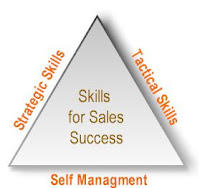
1. Opt-In Page Expectations — An effective content strategy starts with your opt-in process. Be certain you manage subscriber expectations at the start. Describe in a sentence or two the type of content your newsletter contains and the value it will deliver readers. Also provide a link to back issues so that prospective subscribers can see exactly what to expect.
2. Identify and Stick to an Editorial Focus — Your recipients only have room for a limited number of newsletters on their list of “must read” newsletters. Identify the core focus of your newsletter, establish an editorial approach and then stick to it.
3. Establish Regular Columns and Features — A key to sustaining ongoing value is to institute recurring columns and topic features. Subscribers will know what to expect and it also allows you to plan and focus the content and develop a real position and expectation in recipients' minds.
4. Table of Contents — If you have more than two articles include an “In This Issue” section at the top of your newsletter. Give them a quick sense of what the articles are about and provide a link down to each article within the newsletter.
5. Use Short Teaser Articles — For articles longer than three or four paragraphs, use short “teaser” introductions that whet your reader’s appetite and motivate them to click through to the entire article posted on your Web site. This makes it easy for readers to determine their interest in the topic and enables you to track which articles and topics are of most interest.
6. Sidebars — Use sidebar boxes and columns for promotional and supporting information that is not the primary focus of the newsletter. This includes company and new product information, news, events, resource links, brochure links, etc. This enables the reader to easily find this information while clearly separating it in their mind from the primary editorial value of the newsletter articles.
7. Have a Personality — Just because you are producing a corporate newsletter doesn’t mean it can’t have a personality. You want the reader to have a sense that there are humans on the other end of the newsletter. Establish someone as the editorial face of the newsletter and don’t be afraid to have them interject some humor and personal flavor. Humor can be great, but be careful not to offend.
8. Tips and Best Practices — In our experience B2B readers love “tips” and can’t get enough of them. No matter what profession, workers are always interested in practical ideas and best practices they can put to use. Consider including a Quick Tip feature and focusing some of your articles around actionable tips.
9. Benchmarking and Statistics — Your customers and prospects are keenly interested in how they are doing compared to other companies. Providing benchmarking information and industry statistics will keep readers coming back for more each month.
10. FAQ/Ask The Expert — Columns devoted to answering questions are a great way to generate reader interest and feedback, while simultaneously enabling your company to establish its expertise in particular areas.
11. Case Studies — Customer case studies are always of interest to readers. They provide practical examples of success stories and strategies, and enable you to convey your company’s value proposition.
12. Use Click-Through Stats to Refine Editorial Focus — Continuously monitor which columns and type of articles are driving the most clicks. Use this information to refine both topics and editorial style.
13. Monitor Web Analytics — Check your Web site log files on occasion to determine which articles and content on your site are most visited. Use this information as key input into your editorial focus.
14. Reader Surveys — Consider conducting reader surveys a few times a year. An annual survey can uncover changing needs and interests among your readers. Additional reader surveys can be conducted on specific topics on which the results form the basis of future articles.
15. Ask Sales and Support — Other employees are great sources of ideas for content. Sales and support staff in particular can have great insights as they are dealing directly with customers and prospects on a daily basis.
16. Competitor and Industry Newsletters — Read industry and competitor newsletters and make a list of future story ideas based on interesting topics in these newsletters.
17. Subject Line is Key — Tie your subject line to a specific article in your newsletter that will generate the most opens. Don’t feel limited to use the same words used in an article title. Think newspaper headline style and craft a subject line that will stand out in your recipients’ inboxes.
18. Subtle Self Promotion — While educating your readers with tips and best practices, insert subtle, but supporting, references to your company, product or service. Done well it won’t seem out of place for your readers and helps achieve your overall goals for the newsletter.
19. Feedback — Provide a “Feedback” link after each article so that readers can easily send you feedback and suggestions for other articles.
20. Partner/Customer/Expert Articles — Solicit articles from your clients, partners and industry experts. Using these external sources will help position your newsletter in readers’ minds as having greater interest and value beyond your company’s self promotion.














